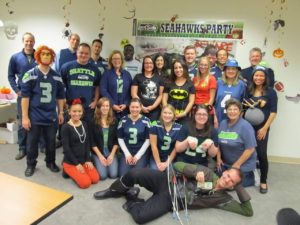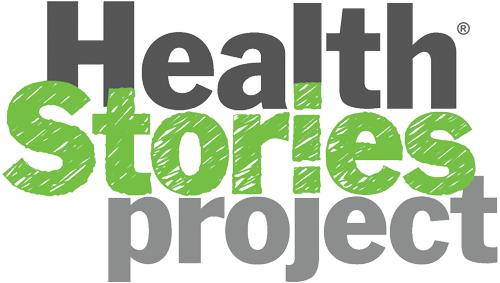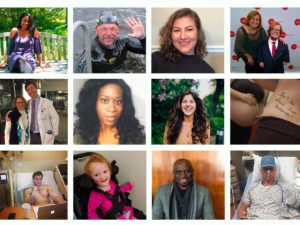A Day in the Life of a Type 1 Diabetic Auditor
For an auditor in a public accounting firm during busy season, the average day follows a tough routine where fast food beats food prep, late nights outlast rest and exercise never makes the New Year’s Resolution list. But when almost a third of the year from January through April involves 60 to 80 hours of work per week, temporarily setting aside thoughts of health isn’t an option for auditors like 24-year-old Jessica Welch. For Jessica, who is diagnosed with type 1 diabetes, the average day has a few more twists in it:
- Wake early and work a few hours (unless she had to go to bed late because lack of sleep can cause stress and spike her blood sugar).
- Eat breakfast while working and pause work to test her blood glucose level and bolus, an indication of insulin management. Then medicate before eating.
- Meet a client by 8:00 a.m. and continue a full day’s work remembering to take a break while eating to again test her blood and bolus.
- Go home to eat dinner. Test her blood and bolus, grocery shop for healthy food, prepare meals for the following day, try to get in a workout, but prioritize sleep to minimize stress, and sometimes work more again.
Even on days that go perfectly, Jessica’s blood sugar can still have a high or low, and for the days that don’t go perfectly, even type 1 diabetes can be pushed aside or forgotten.



Navigating her professional life and diabetes is a challenge, but Jessica is used to the hurdles it can introduce to day-to-day life after 13 years of experience.
A Time of Thanks and Diagnosis



“My mom made a comment about how pale I appeared. I looked in the mirror and suddenly noticed how corpse-like I looked,” Jessica remembers grimly. “I think that’s when my mom realized we needed to go to the doctor.”
After being diagnosed, Jessica was hospitalized because she was most likely going into diabetic ketoacidosis. Her body was beginning to starve, depleting her fat stores and beginning to break down muscle tissue, creating enough of a molecular byproduct to turn her blood acidic. Had she eaten a normal Thanksgiving meal the following day as planned, she might have gone into a coma.
Treatments and Transition
After being diagnosed with type 1 diabetes, Jessica and her parents worked with her doctors to accommodate the new health norm.
“The doctors made a big point to my parents when I was little to never say that I couldn’t eat something,” Jessica emphasizes. “The idea is ‘Food is just food and let’s medicate for it’ versus ‘There are foods I can and can’t eat.’ I look at it as data that can be adjusted.”



A large part of living with type 1 diabetes revolves around numbers and calculation. So over the years, Jessica became fluent in carb calculations, test strip interpretation, insulin level monitoring and blood sugar examination. Even life outside of the medical realm is affected by diabetes, however.
“I actually can’t think of a part of my life type 1 diabetes didn’t affect, even my personality,” Jessica acknowledges. “I’ve been taught from a young age to track things and look at trends and track goals-so I’ve basically always seen challenges and gone for them.”
Throughout her life, Jessica always took the hardest classes in school and aimed for straight As. She always had to be cognizant of her health and acknowledge when her energy was limited, which could prove challenging.
“I had teachers not take diabetes seriously. Some thought I was faking it to get out of class,” Jessica remembers with annoyance.
But even with the occasional skeptical teacher, Jessica still looked to overachieve academically. In college, she decided to become an accountant because it was the most marketable degree for the shortest amount of schooling, and she graduated college a year and a half early with that plan in mind.
“Plus, I have always done well with written numbers, logic and puzzles, which is all accounting is,” Jessica adds.
Entering the Professional World, Pump in Place
When Jessica was job hunting, she had to decide where to draw the line between her medical life and her professional one.
“When I job hunt, I never disclose upfront that I have diabetes. I typically feel out a crowd first,” Jessica says.
To work successfully though, it’s a necessity for Jessica to disclose her condition to supervisors and some colleagues so she can function successfully.
“I typically have more success when people know about my diabetes. If I’m having a low [blood sugar level] and making mistakes, it’s not a reflection on me, it’s just that I’m having a low,” Jessica clarifies. “Otherwise people think I’m an idiot and wonder why I’m making inappropriate jokes, because having a low is like being drunk.”
There have been days at work that Jessica has to admit her health comes first. She’s had to leave early and had a few “reality checks” when her diabetes caught up with her.
“During those times, even though I was testing every hour, my blood sugar was not going down, and I couldn’t control the fluctuations. Taking that step-not even just telling my boss, but telling myself-and acknowledging I could go home helped relieve stress and lower my blood sugar,” Jessica says with satisfaction.
It is also a major help to have an understanding workplace when such health problems arise.
“Saying ‘diabetes’ can almost be like a magic word. I say it and people throw up their hands and say, ‘Go, do what you need.’ In my professional life, everyone has taken it seriously,” Jessica notes with relief.
Successfully Managing Work and Diabetes
Today, Jessica is an auditor at a large national public accounting firm.
“I analyze clients-midsize companies-their financial statements and test the balances to make sure they’re accurate,” Jessica explains.
For work, Jessica has traveled locally, regionally, and nationally to perform audits and meet with clients. Sometimes travel can introduce annoying and even dangerous barriers.



“I’ve had to fly with diabetes to the remote bays of Alaska where there are no hospitals for thousands of miles. That Alaska job was really scary actually,” Jessica admits. “I didn’t realize how remote it was till I got there. I knew if I had a really bad low, I’d be dead.”
Even for shorter business trips that just involve driving a few hours, Jessica has to be aware of her blood sugar.
“I should test every time I get behind the wheel. Sometimes I have to pull over to treat my diabetes. And there are judgment calls too, like when I feel I may be having a low but I’m only five minutes away from my destination,” Jessica says.
Overall, Jessica still strives for that perfect work and health balance.
“As far as juggling work and my health, I think that I’m not very good at it yet,” Jessica admits with a touch of humor. “It’s been my biggest challenge, especially as someone who is very driven and with an ‘I need to get 100 percent’ mentality. It can be difficult to step back and notice I’m not taking care of my body.”
Type 1 Tips and Tricks in the Working World
Even as someone still figuring out how to manage diabetes in the professional world, Jessica has learned a lot in the two years she’s worked as an auditor. For fellow type 1 diabetics, she has the following advice:
- Remember to test blood sugar by finding a method that fits your lifestyle. “You have to find what works for you, like phone alarms, a text from a family member or a CGM [continuous glucose monitoring] with a pump alarm. It’s very easy to put diabetes on the backburner, especially with a pump that does things for you. But it’s very important and empowering to do those checks.”
- Prep meals as often as you can. “When I prep my meals, I know exactly what the carb count is and how it will affect me. I always try to pack lunch or eat at a place I’m familiar with. When I’m traveling for an inventory observation and know it will be a long day, I make sure to always bring snacks.”
- When traveling to extreme locales, prepare with weather in mind. “If I’m going somewhere with extreme temperatures, I’ll pack my diabetes stuff appropriately. So if it’s hot, I’ll use an insulin cooling case. If I’m going someplace cold, I’ll wrap it in something. In Alaska it was negative 10 degrees, so I would take the vials out and stick them in my jacket pocket by my body heat.”
- For out of country travel, utilize the support systems in place. “Touch base with your doctor before going out of country. There are networks of doctors and organizations that understand diabetes. So if you have an emergency, you can call and find help. I’ll also have my doctor write a letter explaining what’s in my bag and have it translated in the native language of the place I’m going to so airport security doesn’t try to take my insulin and syringes. Learn how to say ‘diabetes’ in that language too.”
- Even with standard travel, take the time to prepare and be aware. “I figure out the number of pump site changes I’ll need, then I multiply that number by four. If someone bumps into me and the site rips out, I’ll need another. I never put diabetes supplies in a checked bag, so if my bag gets lost, I know I won’t die from lack of medication. I bring extra snacks, my medication to treat severe low blood sugar and medical ID.”
- Have a community to support you. “Having someone to tap you on the shoulder and say, ‘Hey, maybe you should do this’ or ‘You’re not going to the like the results if you don’t take care of that’ can be so helpful. People with networks have much more control over their disease than those who don’t. Support groups and camps have been one of the biggest impacts on my diabetes.”
- Find a doctor that understands you. “An endocrinologist is going to be your biggest ally and resource for diabetes. If you have one you don’t trust or doesn’t listen to your concerns, you should find another. The difference between a doctor you’re working against and one working with you is night and day.”
- Know that the numbers aren’t everything. “Even the absolute perfect diabetic who checks their blood sugar all the time and does a perfect CGM and testing can still end up with a bad reading because of uncontrollable factors. So never look at your number and think it’s a reflection of your efforts. Sometimes your body just has different plans.”
- Examine yourself honestly. “I sometimes have to step back and do an honest self-check. You have to realize your blood sugar has been out of control and you feel terrible, so you need a break. You have to make the decision to put your health first.”

